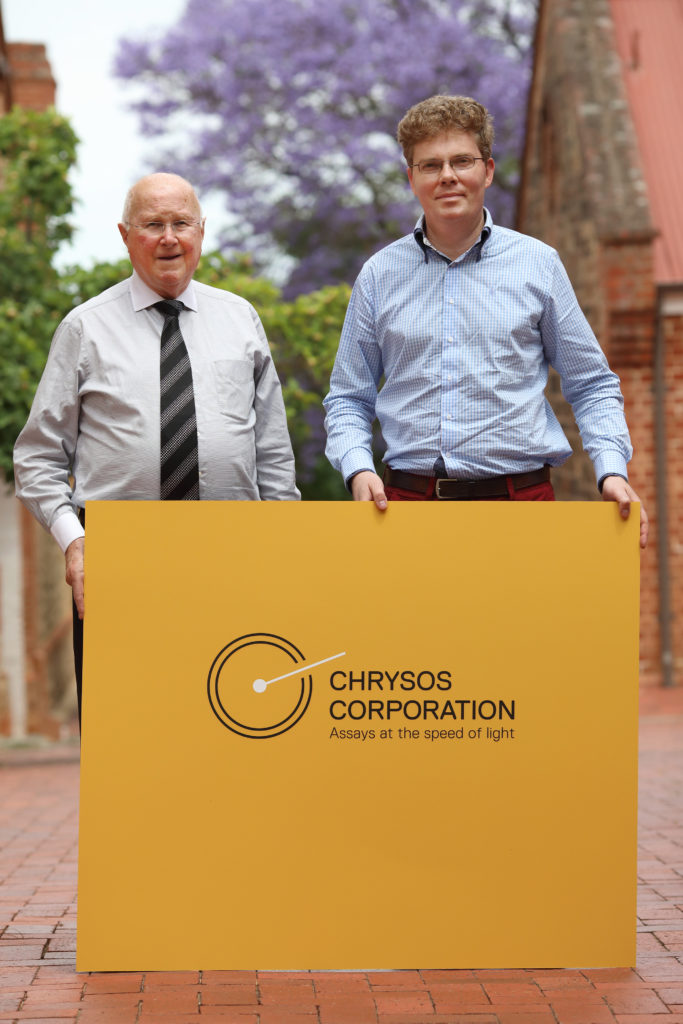New x-ray technology will bombard rock samples to help us locate gold and other metals.

Our new partnership with Chrysos will help us use x-ray vision to find gold.
Our new partnership with Chrysos will bring our x-ray gold detection technology to a new global market.
The Australian gold rush of the nineteenth century brought instant riches to a few and a longer legacy of prosperity to the nation.
The discovery of gold in 1851 triggered a transformation of Australia from a fledging colony of convicts to a multicultural nation of immigrants seeking their fortune on the goldfield. In just two years the population grew from just 77,000 to a whopping 540,000.
While the chances of finding a fortune panning the rivers around Bendigo and Ballarat are long gone, Australia still produces a significant proportion of the world’s gold. Australia’s annual gold production is valued at approximately $15 billion and continues to be a high performer in a global market worth over $150 billion. Analytical services are an essential part of the gold mining value chain, from exploring for new deposits through to running profitable extraction operations.
X-ray vision for gold
We are not claiming we have cracked Superman’s power to see through solid objects in a glance but our scientists’ super-intellectual powers have developed a new X-ray method which can see gold and other metals in solid rock.
Called the PhotonAssay, this method uses high powered X-rays to bombard rock samples and activate atoms of gold and other metals. A highly sensitive detector picks up unique atomic signatures from these elements to determine their concentrations.
Rapid results increases productivity and profits
Compared to existing gold analysis methods which can takes days to get a result, the PhotonAssay delivers accurate results in just a few minutes without generating the toxic waste products which have been problematic in other analysis systems.
Although the basic principles of this analysis method have been known for decades, the complex nature of the technology has meant that the technique has found only limited commercial application to date.
In an industry facing declining ore grades, rapid analytical technology has the potential to unlock substantial productivity gains in gold mining and production, and open up a significant new market for real-time analysis services in on-site applications.
New technology brought to market by Chrysos
We’re partnering with Chrysos Corporation Limited (Chrysos) to bring the PhotonAssay X-ray gold detection technology to market. Chrysos, named from the Greek word for gold, is setting its sights on a slice of the $1 billion global gold assay business. Although development has initially been focussed on gold, the technology can be applied to a wide range of other minerals.

L-R: Mr Anthony McLellan, Chairman of Chrysos, and Dr James Tickner , our lead inventor of the PhotonAssay X-ray gold detection technology.
L-R: Mr Anthony McLellan, Chairman of Chrysos, and Dr James Tickner , our lead inventor of the PhotonAssay X-ray gold detection technology.
Chrysos will deliver its first lab-based high-throughput analytical unit in late 2017 before rolling out smaller systems for mine-site operations the following year. And so while all that glitters is not gold, Chrysos’ Photon Assay will be able to give rapid and accurate results to tell the real stuff from the rest.


3rd February 2018 at 6:27 pm
How many mines have used this- do you contact them, and what does it cost to use?
6th February 2018 at 9:49 am
Hi Helen,
Ausdrill will be the first company to set up a unit at a mine in Australia this year. For more information about the technology, visit our commercial partner’s website: http://www.chrysos.com.au
Cheers,
Eliza
CSIRO social media team
19th December 2016 at 8:45 am
Does it also detect soil moisture at different heights? I’m wondering about its application for monitoring groundwater levels
20th December 2016 at 4:49 pm
Hi Jill. No it doesn’t have an application to measure groundwater levels.
16th December 2016 at 2:57 am
Please see Downhole data without delay ….Resourceful/issue 10…fastgrade …neutrons, gamma rays.Is this the same?